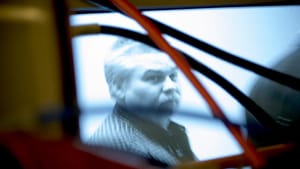Stay in the Loop
BSR publishes on a weekly schedule, with an email newsletter every Wednesday and Thursday morning. There’s no paywall, and subscribing is always free.
When innocence isn't presumed
'Making a Murderer' on Netflix

The Netflix documentary Making a Murderer details the complicated story of Steven Avery. In 1985, he was arrested, tried, and convicted in Manitowoc County, Wisconsin of raping and beating a young wife and mother. Throughout his trial, his appeals, and his 18 years in prison, Avery denied committing the crime, even though the victim identified him both at a lineup conducted shortly after the assault and at trial.
In 2003, DNA evidence proved that the assault was committed by a man with a history of sexual assaults, and Avery was released from prison.
In tiny Manitowoc County, the reversal of Avery's conviction was monumental news. Locals had been certain of his guilt and certain that the vile crime could only have been committed by an Avery. In a community where most people work the land, the Averys work the fringes — they own and operate an auto salvage yard. The Averys were described by a local investigator as a bunch of interbreeding Neanderthals who should be driven from the face of the Earth — and he was hired by one of the Avery family’s lawyers.
Looking for justice
The first few episodes detail the original crime and Steve Avery’s conviction, imprisonment, resurrection, and reentry into Manitowoc County. He returned with, literally, a vengeance: He brought suit against the local sheriff and district attorney, as well as the county, for $38 million — an amount that could bankrupt such a small county. His attorneys amassed a significant amount of evidence indicating that Avery's conviction was not a mistake, but was due to overeagerness, if not an outright conspiracy, on the part of the local law enforcement community, to pin the rape and assault on him.
While Avery’s lawsuits were underway — and legislation was being introduced to ensure that what had happened to Avery wouldn’t happen again — Steve Avery was arrested for the rape, murder, and mutilation of the corpse of a young woman, Teresa Halbach.
The evidence against him seemed overwhelming: both physical evidence and a confession by Brendan Dassey, Avery’s 16-year-old nephew, that he had helped Avery rape and kill Halbach and burn her body. Avery denied involvement in the murder, and Dassey retracted his confession, but nobody believed them. Their denials sounded like lies told by desperate criminals. The problem is — it appears the criminals were telling the truth.
The final verdict
Making a Murderer is the compelling story of how our criminal justice system is broken. It is the story of prosecutors who couldn’t care less about justice and care only about a guilty verdict, of police investigators who are willing to do anything to get a confession or a conviction, of media who are all too willing to play along with police and prosecutors to get a sensational story, and a public that is not only indifferent to the facts but also actively on the side of the prosecutors and police in some misguided “law and order” stance. Yes, there are people who get away with murder. That happens in a society where the accused are presumed innocent. What should not happen is societal murder in which police, prosecutors, the media, and the public conspire to find “undesirables” guilty.
The reaction to Making a Murderer has been strangely political. Right-wing pundits claim filmmakers Moira Demos and Laura Ricciardi omitted key facts — but one person’s facts are another person’s deceptions. For example, the former prosecutor claims that Avery’s “sweat DNA” was found on the car key in his bedroom and on Halbach’s SUV. Problem is, there is no such thing as “sweat DNA.” In any case, it is odd that the pundits who decry the power of the government and see conspiracies around every corner side with those same despicable powers in excusing — or ignoring — police and prosecutorial overreaching and misconduct.
The documentary tells the story of not just the accused, but their families, their attorneys, their prosecutors, and the community they all are part of. This chilling tale, with its many unanswered questions, raises questions about how our much vaunted criminal justice system has fallen so far. Make no mistake about it, what happened to Avery and Dassey in Manitowoc County happens every day to people in Philadelphia County whose story will never be told.
What, When, Where
Making a Murderer. Moira Demos and Laura Ricciardi directed. Available for streaming on Netflix.
Sign up for our newsletter
All of the week's new articles, all in one place. Sign up for the free weekly BSR newsletters, and don't miss a conversation.

 Armen Pandola
Armen Pandola